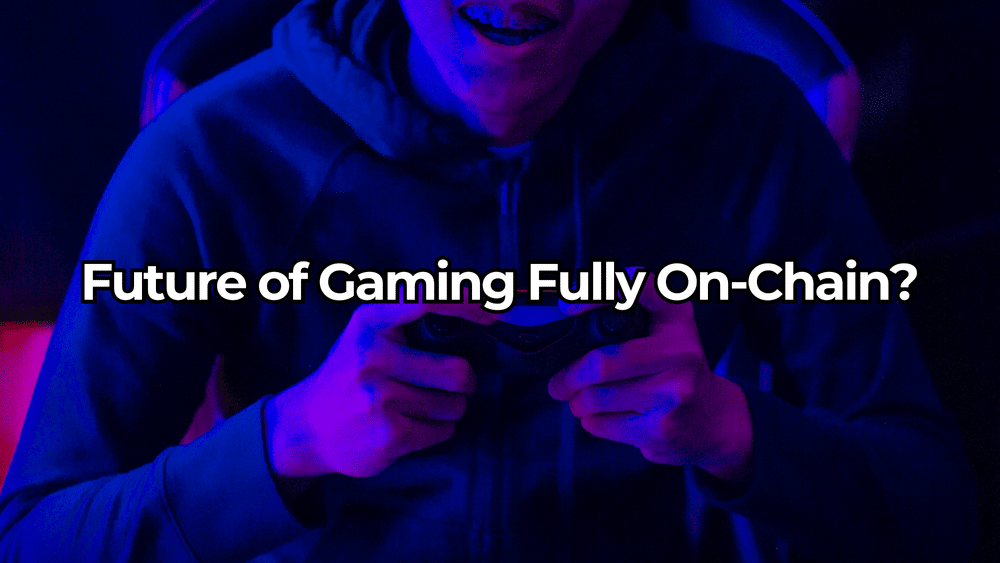In the ever-evolving landscape of digital gaming, Fully On-Chain games (FOCGs) represent a thrilling progression. Unlike their predecessors, FOCGs harness the blockchain not merely to track ownership of digital assets but as a foundation for game logic and state, transforming them into decentralized platforms of interaction. This significant shift promises to redefine gaming with its focus on decentralization, permanence, and permissionless interaction.
Defining Fully On-Chain games
At their core, FOCGs stand out by embodying the game mechanics, rules, and state entirely within the blockchain. Termed as “Autonomous Worlds,” these games operate free from centralized controls, presenting a departure from traditional gaming models. This innate autonomy not only enhances the permanence of these virtual worlds but also opens up new avenues for innovation in gameplay and economic models. Moreover, the decentralized nature of FOCGs paves the way for unparalleled user-generated content (UGC), empowering players to craft, share, and monetize their in-game creations without constraint.
New Business Models Meet Blockchain Gaming
The introduction of blockchain technology to gaming is set to continue the industry’s evolution beyond traditional monetization strategies. FOCGs bring to the table innovative methods such as nano-transactions and fractionalized payments, expanding upon existing models like free-to-play (F2P). This technological leap forward provides a fertile ground for experimentation, potentially ushering in the next paradigm shift in how games are consumed and funded. Such flexibility could significantly enhance the economic landscape of gaming, providing both developers and players with more nuanced and equitable ways to generate value from their experiences.
Fully On-Chain games and Digital Asset Utility
FOCGs radically alter the perception and utility of in-game assets. Where traditional games depend on centralized databases to maintain asset ownership, FOCGs leverage the blockchain to ensure players retain control over their items, regardless of the game’s fate. This not only secures their investments but also democratizes the utility of these assets, allowing them to be used and traded without centralized approval or limitation. It signifies a shift towards a more open and resilient gaming ecosystem, where the value and utility of assets are preserved across the gaming landscape.
User-Generated Content in FOCGs
The role of UGC in gaming cannot be overstated, with many successes attributed to the creativity and engagement of player communities. FOCGs elevate this aspect by removing the barriers typically associated with content creation within games. By being decentralized and open-source, these platforms allow nearly limitless possibilities for creators, from building new game mechanics to creating unique narratives. Such openness not only fosters a more vibrant and diverse content ecosystem but also enhances the economic model of gaming, giving rise to novel ways for creators to benefit from their contributions.
The Role of FOCGs in Building the Future web3 Internet
Video games have long been at the forefront of technological innovation, offering a sandbox for exploring and refining new concepts. FOCGs continue this tradition within the realm of web3, serving as a testbed for decentralized technologies and economic models. These games could pave the way for broader applications of these technologies, influencing sectors beyond gaming. The rapid iteration and experimental nature of gaming make it an ideal space for pioneering and adopting groundbreaking web3 functionalities.
Final Thoughts
FOCGs embody a radical shift in the gaming industry, marking a move towards more decentralized, player-driven experiences. While challenges remain in terms of infrastructure and scalability, the ongoing advancements in blockchain technology hold the promise of making FOCGs a mainstay in the gaming world. Their potential for fostering innovation, both in terms of gameplay and economic models, cannot be underestimated. As the blockchain continues to mature, so too will the possibilities for FOCGs, indicating a vibrant future for this emerging niche. For those keen on delving deeper into the subject, a wealth of information is available in the comprehensive report published by Bitkraft, offering valuable insights into the trajectory of fully on-chain gaming.
